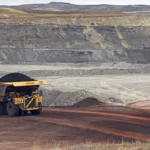FRIDAY FOCUS: Wyoming Community Development Authority Leader Talks Housing Market, Vision for Future
Scott Hoversland draws on Great Recession experience to face pandemic housing crunch
- Published In: Other News & Features
- Last Updated: Mar 17, 2023

By David Dudley
Special to the Wyoming Truth
Scott Hoversland, executive director of the Wyoming Community Development Authority (WCDA), is no stranger to crisis. Within two years of joining the nonprofit in 2005, Hoversland and his team helped families navigate the housing market during the Great Recession.
“That was hard,” he recalled. “But I remember the ‘good old days,’ in the 1980s, when interest rates were around 17%. That makes 6% look like a great deal.”
Since the COVID-19 pandemic, Americans have been in the grips of the worst housing crisis since the economic crash of 2008-2009. The national trends hit home for Wyomingites, as housing shortages, coupled with rising costs, impact communities statewide.
That’s where organizations like the Casper-based WCDA become increasingly important—not only for low-income families, but for overall economic growth.

The WCDA is the housing finance agency for Wyoming. There’s one in every state, as well as Puerto Rico and Washington D.C. Between 2021 and 2022, the WCDA helped 860 Wyomingites become homeowners, placing 183 new units of affordable rentals in communities ranging from Casper to Cody and Cheyenne to Douglas. And the organization provided nearly $6 million in down payment assistance.
But Hoversland, 57, is especially proud of WCDA’s work helping the Wyoming Rescue Mission secure $1.8 million in internal funding to build its Casper facility, which serves around 200 homeless people on any given day.
The Wyoming Truth recently spoke with Hoversland about how the pandemic has impacted the state’s housing market, the ways in which housing shapes local economies, and what the future may bring. What follows are excerpts from the conversation.
What services does WCDA provide?
Hoversland: We have several programs on the single-family home ownership side. We offer help through the first-time homebuyer program. For our purposes, that means that you haven’t owned a house as your primary residence within the last three years.
So, if you’re a first-time homebuyer, and you meet the income qualification limits, and can afford the purchase price, we will help you get your first mortgage on your house. We also offer down payment assistance, home-buyer education, among many other services.
I can see how the WCDA’s programs help families buy their first homes, but how does that relates to the state’s economy?
Hoversland: Housing is one of the main drivers for economic development. For instance, when companies that want to come into the state to build businesses talk with the towns where they’d like to be, the first question is always: What’s your housing availability? And there’s just not a whole lot of it right now. But cities and towns across the state are looking to encourage more economic development. If they don’t have the housing to support that growth, then it stalls or doesn’t happen.
Can you give a specific example?
Hoversland: If you look at Kemmerer, where they’re building the new nuclear plant, you can see the challenges that come with economic development. This is a frontier-era mining town with a population of about 2,700. TerraPower saw early on that they would have to bring in 1,000 people to build out the plant. But after that, they could employ about 250 people in a sustainable way. Investors don’t want to do that, because they’ll lose money in the long run.
So, it’s a double-edged sword. Towns have to consider the viability of investing in housing for 1,000, when only a quarter of those workers may stay on after the project is completed?
Hoversland: Yes, that’s right. And every other town in Wyoming is the same way. The population isn’t booming, like other places in the U.S. We want to bring in more economic development, more businesses. But the housing stock right now is so limited. So we need new building to happen.
But it also has to be affordable.
Hoversland: Yes. Since the pandemic, that’s the hardest part. There’s a lot of building going on around the state, but these units are in the higher range of home prices. In much of Wyoming, that’s around $500,000 and higher. Whereas the typical starter home should top out around $250,000. There are a few things happening there.
Inflation has driven up costs [and] supply chain issues have happened because of the pandemic. Some of that is leveling off. But now interest rates have gone up. Our interest rates at WCDA were around 3%. Right now, it’s 5.75%, so that’s a big change. But even at 5.5%, historically, that’s a pretty good interest rate. It’s just, you know, for 10 years, they were right around that 2.5% to 3% range. The rates were there so long that people got used to that, and we got spoiled.
I remember when I was working here in 2007, 2008, right before the financial crisis. Our interest rates were at 6%. So they’re not back up to that level yet. But who knows what the future holds?
What other aspects of the Wyoming housing market have changed during the pandemic?
Hoversland: It’s harder to find starter homes. In the population centers of Wyoming – Cheyenne and Casper — they’re building mostly new homes at $500,000 and more. . . . You don’t see a whole lot of construction in the $250,000 range. Right now, there’s a total of 1,655 single family homes for sale in Wyoming, according to Realtor.com. Of those, only 449 (27%) are under $300,000.
Before the pandemic developers, or construction companies, could crank out a lot of starter homes and make a modest profit. But now, they do these bigger homes and make more profit. COVID has depleted the number of workers in the construction industry. So, they’re struggling to find workers. The ones that stick around are those who command higher wages. Then employers have to offer higher wages to newcomers, too, to remain competitive.
That drives up prices. Now, they’re going, “Well, with prices so high, we’ll have to build higher-priced homes, and make our profit margins there.” They don’t have enough workforce to diversify into those areas.
The pandemic seems to have set in motion migration away from California, Oregon and Washington. A lot of people wound up in Arizona, Utah and Texas. Has Wyoming seen a spike in population?
Hoversland: I think we’ve seen modest changes here, but nothing too crazy. You can come out here and get away from a lot of the problems that come with living in big cities. Wyoming is wide open, so you’re not living on top of each other.
If you look at California, home prices are high, taxes are high. Here, there’s no state income tax. And we have a modest sales tax, which is around 4% to 5% statewide.
How can Wyoming attract more businesses and the people needed to support them?
Hoversland: Again, building will be key. We need more housing, more affordable housing options. One way we can do that is by looking at what they’ve done in South Dakota with the Governor’s House Program.
Their state housing agency works with the corrections system to train prisoners in a construction trade—carpentry, plumbing, electrical and so on—then they go to work to build houses for low-income families. It’s a win-win, because the state gets more affordable housing, and the prisoners learn skills to earn income after they’re released. New homebuyers get into starter homes, and recidivism goes down.
We’re working with the Wyoming Business Council, and some of the other agencies in the state, to try and build our own version of that program.













